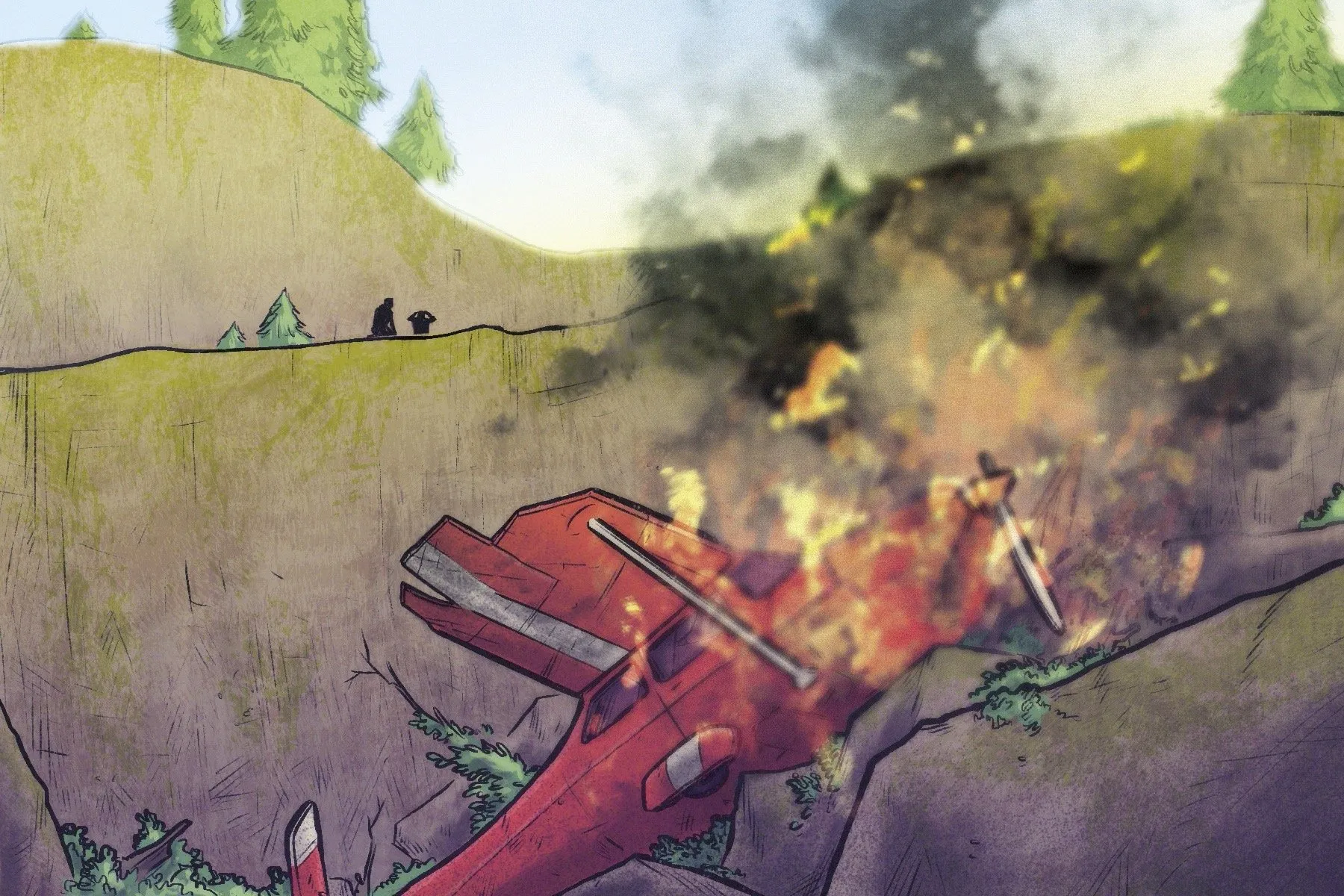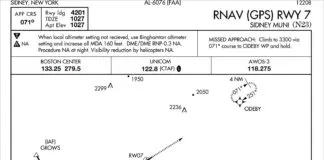Sure as the BRS Save-O’-The-Month calendar flips to a new year, we here at the Department of Self-Righteous Finger Pointing, present the best of the dumbest ways pilots have contributed to keeping the skies safe by rendering as many aircraft as possible unairworthy. Today, we review the year 2016, which reflected a modest improvement in not crashing but still logged 1627 accident/incidents worthy of NTSB note. That’s 4.46 events per day or roughly one prang every 5.3 hours. As with past Stupid Pilot Tricks, we use NTSB “probable cause” results and don’t report on fatal accidents.
Having written, edited or read these stupid highlights for 20 years, I’ve concluded that some things are inevitable. Examples: If you own a Luscombe Model 8 two-seat taildragger you will crash it. Inevitable. Those flying Cessna 180/185s—especially in Alaska—will ground loop and nose-over. In fact, if you fly anything in Alaska, you’ll crash. Can’t be avoided. And if you think you’re safe in the dullest of airplanes, the Cessna 172, you are … until you run out of gas, because it seems—and I’m basing this scientific analysis on NTSB data—every Cessna 172 runs out of gas and crashes. No one knows why.
Runway Use Optional
The FAA has spent years trying to prevent runway incursions, those near-death experiences of aircraft taxiing onto the active in the path of squatting Airbuses. We’ve made progress, especially at airports with moats around the runways and drawbridges that only allow access when no one is on final. But what has the FAA done about runway “excursions,” the unexplained exiting of runways? Nothing! Research shows that runways just aren’t large enough to contain departures or arrivals. Of those pilots who manage to find the centerline, ten out of nine manage to muck things up, as this Cessna 172 pilot in New York did when he “landed hard, bounced, veered off the runway to the right, impacted a tree, and…” if that weren’t enough, and it isn’t to make it into the Stupids… “it then nosed over.” As a topper, the pilot was undergoing a flight review. No mention if he passed. Or if the CFI had been awake during the flight.

Occasionally, an excursion doesn’t even involve a runway as this Beech Sierra pilot demonstrated in Oregon when his original plan to “land on a dry creek bed … (good ADM so far) … at night … (better) … to meet his friend and drop off parts for a jet car…” Whoa! Jet car? I mean, that’s cool, but for some weird reason, the mission failed when the pilot missed the dry creek bed at night in search of a jet car and “mistakenly landed in a field.” And hit a fence … at night… Unclear if the parts ever made it to the stranded Batmobile.
Low … Er, Too Low
One advantage of playing the fool at low altitudes is you don’t have long to be scared when something inevitably goes awry. Consider the Decathlon pilot who flew low along a river to impress his passenger. Unfortunately, rivers often have powerlines running across them, and this Tennessee waterway was no exception, so no surprise when the airplane snagged a cable. When investigators asked the pilot how he might prevent future cable encounters, he opined with remarkable insight, “Increase altitude minimums by at least double to ensure adequate reaction time to avoid obstacles.” Lesson learned. But not shared.
Not to be outdone down low, a Cessna 172 pilot in New Mexico showed his passenger how thrilling it is to “fly the river,” and even more exciting when they “struck a cable that spanned the river cutting the aircraft in half.” Luckily, the river was dry, so no one drowned in either portion of the vivisected Skyhawk.
Rounding out the bottom-feeding follies is an airline transport pilot flying a 1942 AT-6 over Missouri—slightly over. He’d been flying low “because he had been taking photos of a friend’s farm.” A WWII advanced trainer might not seem the best choice for low-level aerial reconnaissance, particularly when witnesses “observed the airplane conducting aerobatic maneuvers during the flight.” The AT-6 was flying low enough to “startle” a witness’s horses prior to rolling inverted for 10 seconds—coincidentally, about the time the operator’s manual says the engine will run inverted before quitting. Which it did, and the 74-year-old warbird struck the trees and powerlines. Injuries were serious but not to the horses that reportedly nickered in equine derision, “Oh, Wilbur…” (Ask your grandmother.)
Gear-up landings are usually not included in a complex training lesson plan or in our reviews, because they’re so jejune. A Kansas student and instructor challenged our prejudice and added the experience to the syllabus as their Cessna 172RG landed with the wheels safely tucked inside the wells. What’s notable is how quickly the student grasped the situation when he “reported that during landing, the airplane touched down and began sliding on the concrete runway.” At which point he surmised that “something was wrong.” No sneaking a prop-curling belly-flop past this budding aerosleuth. Perhaps it was the combination of excess parasite drag and reduced propeller diameter that necessitated full power to taxi to the ramp, where the CFI likely noted in the training folder that additional instruction was warranted.
High, Hot, and Heavyish
Density altitude calculations are something we pretend to learn in ground school, hoping never to apply to real flight. Operating clear of the High Sierras might seem one way to minimize thin air consequences, but a Cherokee 140 (150-hp) tested that theory when it departed Amarillo, Texas (elevation 3648 feet) on a 93-degree day with two passengers on board. Density altitude was later computed to be 6400 feet. To almost no one’s astonishment the wheezing old Cherokee wouldn’t climb and plowed into a field with no injuries. Let’s add 10 more horse, another human and see what happens.
A Piper Warrior (160-hp) tried to depart a Pennsylvania airstrip with fuel, baggage and all four seats strapped to butts, putting the airplane near gross weight. No problem (for investigators). Field elevation was 1357 feet, but the warm air (74 degrees Fahrenheit) put density altitude at 2805 feet. Doesn’t seem so high. Additionally, the aircraft departed a 2987-foot runway (doesn’t seem so short), minus 500 feet for the displaced threshold, with a 0.6-percent uphill gradient and trees at the departure end. Knowing that wasn’t enough to make the Stupids cut, the pilot “initiated a rolling, 0-flap takeoff from an intersection with about 200 feet of usable pavement behind him.” That secured a slot in our lineup as the over-stuffed Warrior never achieved liftoff and veered into the weeds, while the ghosts of ignored flight instructors chanted, “You can’t use the runway behind youuuu…”
Nor, apparently the runway above you, as this California pilot discovered when attempting to land a Cessna 172 (What’s with 172 pilots?) at an “island airport located on top of a plateau.” Challenging but doable, until the Cessna descended below the runway threshold while on final approach at which point the go-around was too little too late, as the airplane impacted terrain, complicating the observation that Skyhawks only run out of gas.
Build Yer Own Crash
Traditionally, when pilots build their own airplanes the first flight is a solo affair and often after an extended period of not flying while building that dream machine in the garage. A Tennessee sport pilot was ready to perform the first test flight of his Zenith CH750 STOL two-seater and must’ve hated to see that right seat unoccupied, so he invited a soon-to-be-former friend for the inaugural crash. They didn’t have to wait long after the pilot opened the throttle, and the airplane lifted off—Yay!—while the test pilot added right rudder to counteract the left turning tendencies, which worsened even as he added more right rudder, but the homebuilt veered further left despite gobs of right rudder input. Success was not an option. No major injuries, except to the pilot/builder’s ego when sharp-eyed investigators discovered that the rudder had been rigged backwards, causing a Bizarro World left-is-right yaw situation, which might have been detected had the pilot—just speculating here—checked control continuity before takeoff. Oh, why bother? No sense delaying the inevitable.
At least this North Carolina pilot spared his friends potential harm when he purchased an already built Skyraider 1 ultralight homebuilt, which he then took aloft for an ultra-first flight. Unable to anticipate the crosswind (so few pilots in NTSB reports can), the Skyraider taxied with extreme prejudice into a nearby tree, after which the pilot reported, “The next thing I knew I was on the ground.” Having never truly left the ground in the traditional sense of flying.
Normally we go easy on student pilots, provided they show a willingness to accept sound advice. This one didn’t so here goes. The “280-hour student pilot” (yup, 280 hours and no certificate—that’s gotta be a funny lesson all by itself) “had just purchased the experimental, light sport airplane in which he had no experience or training.” Possibly assuming that 280 hours of student time in dissimilar aircraft hadn’t taught him anything he couldn’t learn on his own, he waved off a mechanic’s advice to take some dual prior to making the 225-mile solo cross-country flight home.
Everything went well until engine start, when the student discovered that the rather slick, two-seat Arion Lightning had a castering nosewheel, requiring differential braking in order to steer. “Oh. How do I use that…?” the student asked the mechanic, who reiterated his suggestion to get some instruction. The student, again, declined such a silly notion, stating that “he did not have time, and that everything would be fine.” (Oh no! Scary foreshadowing music up!)
Everything was, as the student predicted, “fine,” until he tried to fly, at which point the mechanic/witness later reported to investigators: “The airplane popped up off the ground in a relatively flat attitude.” He then heard “a reduction in power and observed a slight sink, followed by an increase in power with a slight left roll and [ascent], then a decrease in power with a sink/right roll/left yaw, then an increase in power with hard left roll/left yaw.” When the Hokey Pokey air show was over, the Arion was a crumpled lesson on the runway, and the student, although unhurt, was likely none the wiser. At least he had another couple of tenths to put in his logbook.
The Winners Among Losers
The Bronze Safety Last Medallion for 2016 goes to the NTSB, a federal whatever branch of something charged with keeping things that move safe. Mind you, NTSB does a bang-up job, but it displayed a major flaw—shared by many in aviation—in its investigation of a CFI in Pennsylvania who, while instructing in a 1946 Aeronca Champ, experienced an engine failure and…well, let NTSB speak for itself: “…The flight instructor took over the flight controls and made a left turn about 100 feet above the ground with the intent of flying over a hanger (sic).” The snarky parenthetical (sic) means we know NTSB really meant to say that the instructor attempted to leap over a large building that stores aircraft—a hangar—and not a tiny wire coat hanger, shaped like a hangar. Although, maybe not. You can never be sure with the guvm’nt.
The Silver Stupid Sertificate (sic) goes to the commercial pilot who took two passengers aloft in a Cessna 172 for a “Discovery Flight,” only to discover that flying into a narrowing canyon where they experienced an “unforeseen downdraft” was looking stupid. Not to worry. Mustering his chandelle skills from commercial training days, the pilot executed the climbing U-turn but didn’t quite make it through the full 180 degrees before the canyon walls encroached. Actually, they didn’t move one little bit and surely wouldn’t, so the pilot landed on a mountain road, where all went well, until the airplane skidded off the dirt road, down an embankment and burst into flames. No one was hurt, proving that it’s better to be lucky than smart.
The Golden Revoke-Proof Ticket goes to the California helicopter pilot, who wasn’t a helicopter pilot—or any other kind of pilot—but decided to take up solo flying in a Hughes 269B. The copter was parked on a farm but needed to be moved. The accident report states that the “uncertificated helicopter pilot (was) familiar with the helicopter” and decided to try his hand at flying it to the new location. Liftoff was easy, but nearing the destination in a hover, the pilot became “scared”—not of being an unlicensed pilot, and certainly not of anything about the chopper—but, instead, of powerlines. Rather than crash into the wires like any self-respecting copter pilot, he pitched up, rolled over, and the rotor blades thrashed the farmland like a giant runaway blender. That blender bit might be hyperbole, but the copter was trashed, nonetheless, leaving the pilot, who suffered only minor injuries, to face a wrathful FAA, which would…um, what? Force him to get a pilot certificate, so it could be revoked? Perhaps there’s an important lesson in there for us all.
The larger takeaway from this look back in chagrin at 2016 is to not try to learn anything from these events. They’re just stupid. Instead, get up there and explore your own ways to make the funny papers, because if accident history has taught us anything, it’s that we rarely learn a thing.
Paul Berge is a prolific aviation humorist, filmmaker, and author. He flies his Aeronca Champ around Indianola, IA. See his website atPaulBerge.com






Another very funny and enjoyable column Paul. I’d like to see more of your articles!
An accident every 5.3 hours! Yikes, Not sure about anyone else, I would like the author to cross reference these reports against their subscription roles – would be interesting to understand how reading this fine publication effects the accident rates…….
Oh. Mah. Gerd. That was hilarious and just what I needed first thing in the morning. In fact, I believe I will read this every morning as I nurse my coffee. Very nicely written. Thank you.
Paul:
Nice compilation of non-fatal and mostly non-serious injury ‘mishaps’ (the accident gender neutral term of choice). HOWEVER, as was pointed out to me by an eagle eyed student pilot regarding [Bold} The Winners Among Losers [end BOLD]… ya committed two non-fatal errors of your own as you awarded The Bronze Safety Medallion for 2016 when you crashed and burned when you mistakenly asserted the NTSB committed the crime of snarkiness ‘…in its investigation of a CFI in Pennsylvania who, while instructing in a 1946 Aeronca Champ, experienced an engine failure …’ You graciously allowed ‘… NTSB speak for itself: “…The flight instructor took over the flight controls and made a left turn about 100 feet above the ground with the intent of flying over a hanger (sic).” ‘ The NTSB correctly and faithfully repeated the unfortunate flight instructors words exactly and without editing. This required use of “(sic)” to show that the CFI, not the NTSB, doesn’t know the difference between a HANGAR and a hanger. Given that the CFI mistakenly thought the structure was shorter than it really was, he/she indeed got hung up, as if on a ‘hanger’. So maybe ‘(sic)’ was unnecessary. If so, you might have a little bit of justification in your bald faced assumption of snarkism by the govmt.
I gotta say – that taxi back to the ramp following a wheels-up landing is hard to beat in my book. That’s just not a mistake. It’s only missing the cockpit comments from the former instructor.
A local club had a pilot that somehow passed the end of the runway on the ground. After being unable to attain airspeed with full power through a corn field (8″ tall) , they taxied the 172 back to the airport, a 1/2 mile. Maybe there is a corollary to Bob Hoovers “flying into the crash” – – – if the engine is already trashed, use it as needed to avoid walking.
Sorry 8 ft tall corn!
This is a refreshingly humorous and self-aware take on looking back at the past! Sometimes, events are just absurd, and trying to extract deep lessons from them is pointless. Instead, embracing the chaos and finding your own way forward feels like the real message here. Entertaining and thought-provoking!